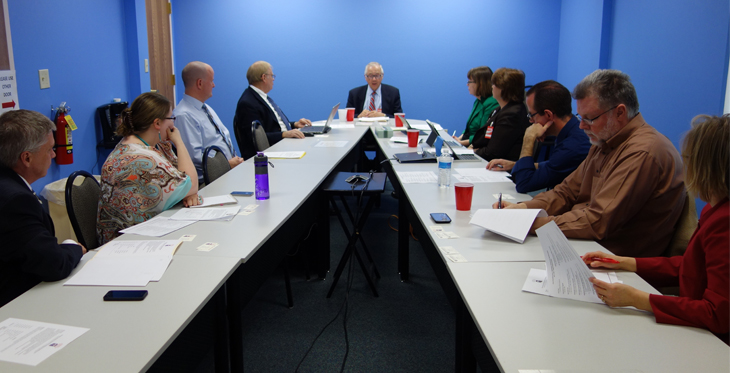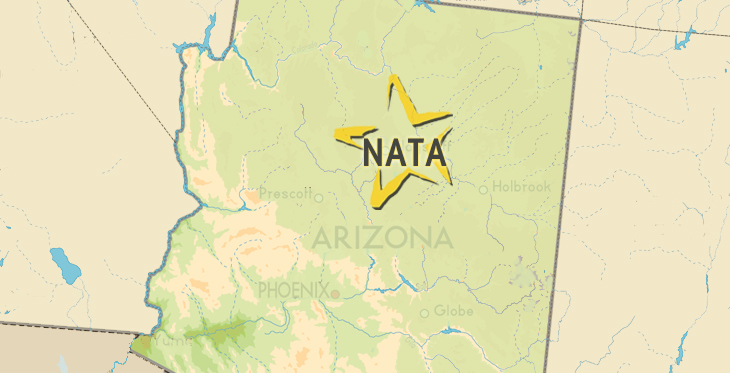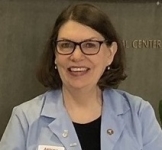Telemedicine is burgeoning in northern Arizona, thanks largely to three Flagstaff-based telemedicine programs. All three programs are not-for-profit, bringing services to medically underserved areas and populations throughout the five counties of northern Arizona. All three programs have won acclaim for their telemedicine programs. And all three have collaborative, innovative leaders.
Meet the players
Northern Arizona Regional Behavioral Health Authority
Northern Arizona Regional Behavioral Health Authority (NARBHA), which contracts with the state to manage behavioral health services for the Medicaid population and those with serious mental illness in northern Arizona, started its telepsychiatry program in 1996 with funding from the same legislative grant that started the Arizona Telemedicine Program (ATP).
Since then, NARBHA’s program has grown to include 90 endpoints. With 25 psychiatric providers throughout Arizona and the country, NARBHA’s telemedicine network has accommodated more than 125,000 doctor-patient sessions since its inception. NARBHA offers free, online “Telepsychiatry Basics” learning modules to share its experiences and lessons learned.
North Country Healthcare
North Country Healthcare (NCHC), a Federally Qualified Health Center, started its telemedicine program six years ago and now has 20 telemedicine endpoints across northern Arizona.
NCHC offers primary care, ophthalmology, diabetes care, radiology, pharmacy, HIV/AIDS care, and behavioral health services via telemedicine, as well as using the technology to train medical learners from AT Still University. NCHC also developed a Hepatitis C program where liver disease specialists from St. Joseph’s Hospital and Medical Center videoconference as a group with medical providers from NCHC clinics to review cases, monitor treatment and train the NCHC providers.
Flagstaff Medical Center
Flagstaff Medical Center (FMC) has a three-and-a-half-year-old telemedicine program that is clinically based, with a focus on reservation work.
FMC has won two USDA Grants funding 14 telemedicine carts deployed at Indian Health services tribal and community hospitals throughout northern Arizona to provide telecardiology and other medical specialty services, including a cart at Supai, a Havasupai village at the bottom of the Grand Canyon.
FMC’s “Care Beyond Walls and WiresTM” is a successful home-monitoring program that is drastically reducing hospital readmission rates and improving the health of patients with chronic illnesses such as congestive heart failure.
How we met
As NARBHA’s telemedicine director, I enjoyed a long-standing, strong, mutually beneficial relationship with the ATP staff. Flagstaff is a small city, so as each new telemedicine program started, I met the program director and we began to communicate, collaborate, share information and support, and meet up at conferences.
NARBHA, NCHC and FMC are active members of the ATP and frequently present at Arizona Telemedicine Council and other statewide meetings. Greg Hales, NCHC telehealth system manager, worked closely with the ATP staff on vetting stethoscopes for telemedicine and setting up the NCHC network, while Gigi Sorenson, telehealth director for Northern Arizona Healthcare, FMC’s parent organization, quickly joined me in the leadership of the American Telemedicine Association’s Business and Finance Special Interest Group. Greg, Gigi and I all benefited from attending ATP telemedicine training courses in our early telemedicine careers.
I came to the ATP in January 2014 wanting to strengthen and formalize these collaborative relationships, so I proposed forming the Northern Arizona Telemedicine Alliance (NATA), with NARBHA, NCHC, FMC and the ATP as members. Everyone agreed, and the alliance had its kickoff meeting February 25 at NARBHA headquarters in Flagstaff.
NATA will meet quarterly, with meetings hosted round-robin by the Flagstaff NATA members. Our next quarterly meeting will be in June at FMC, with the IT theme of possible ways to leverage each other’s networks for business continuity and disaster recovery.

What we do
NATA creates a platform to easily share information, so we can look for synergy opportunities and ways to partner and collaborate to support and leverage each other’s programs. Our goal is to improve healthcare and patient outcomes in northern Arizona through telemedicine and telehealth. For NATA, it’s all about collaboration, not competition.
I think this is the beginning of a beautiful alliance!

